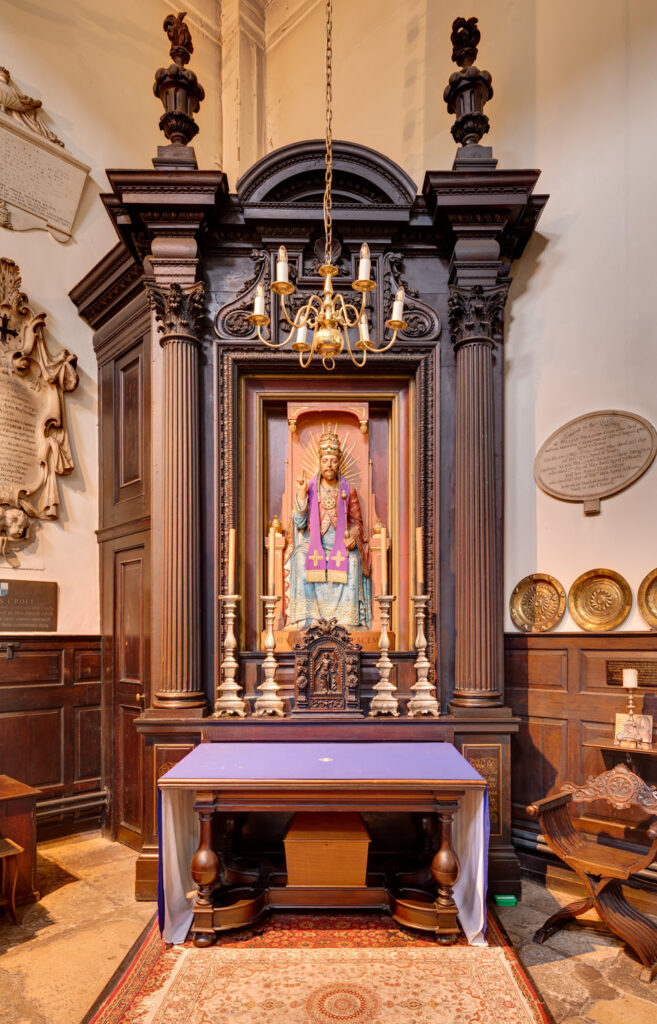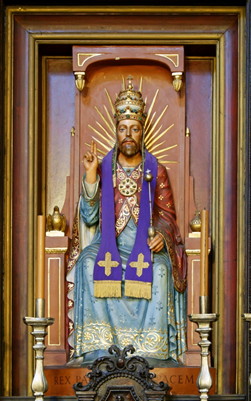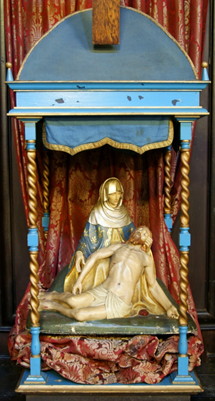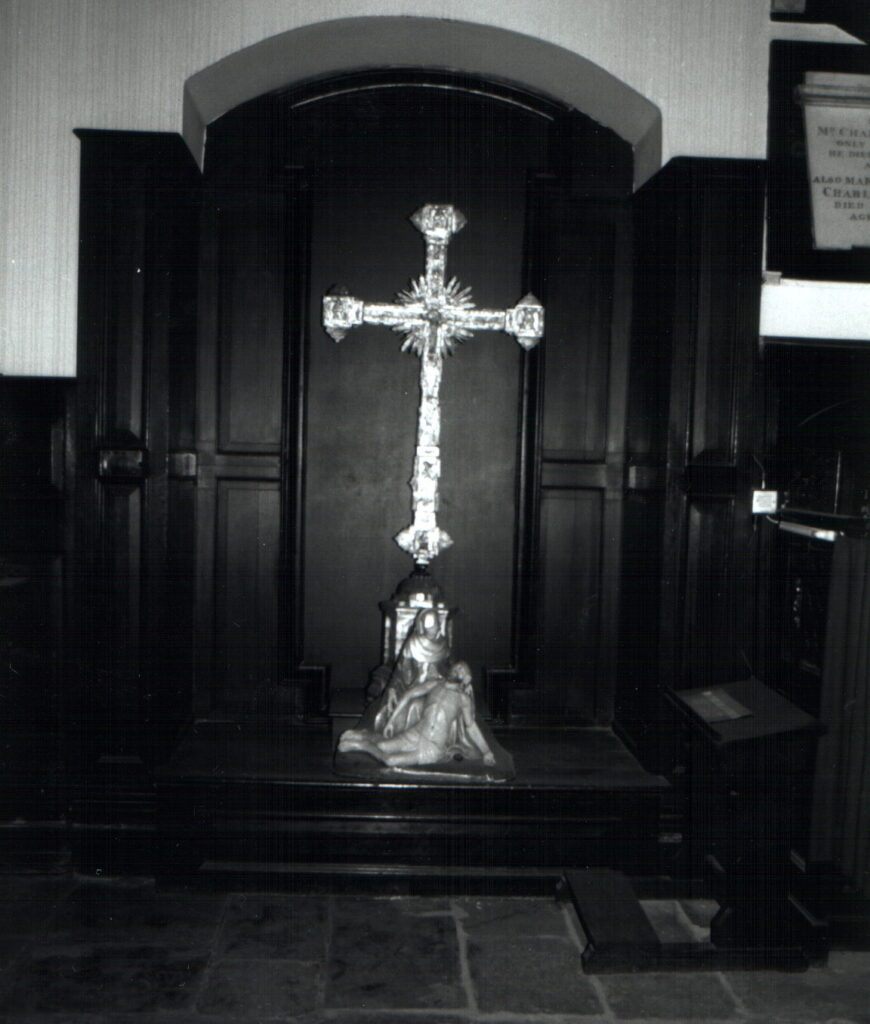
At the east end of the south aisle is the chapel of Christ the King, which is used as the altar of repose on Maundy Thursday where the Sacrament is reserved for adoration and use at the Good Friday service.
The reredos was once the doorcase to the south-east entrance to the church. The figure of Christ the King is based on Van Eyck’s depiction in the Ghent altarpiece of 1432 and was erected in memory of the dead of the two world wars in 1951. The altar is the original 17th centuary Communion table, which has a moulded top, massive baluster-shaped legs and moulded rails with intersecting quadrant ends. Either side of the altar, on the panelling below the ledge, is the inscription:
“In hon[orem] Mariae Matris Dolorum [Mother of Sorrows] et in piam mem[oriam] Mabel Smith. Quae ob die XXX Jan[uarius] MCMXXXV a propinquis et amicis gratissimis pos[uit]”

The enthroned figure of Christ the King sits on a mid-brown wooden throne with a small projecting canopy and large pillar-fronted armrests which are topped on the right by a dove and on the left by an orb. It has decorative features picked out in gold paint: glory rays behind the figure of Christ and line decoration on the canopy and arm rests. Christ wears an orthodox-style gold crown set with (painted) turquoises and rubies and a long turquoise coloured gown with gold embroidery at the hem and, over this, a deep red and gold cope with a gold morse set with (painted) rubies. In addition, a purple silk stole with gold fringing and gold embroidered crosses has been added across His shoulders. Christ’s right hand is raised in blessing and He holds a sceptre in His left hand. The whole is set in, on three sides, a heavy, moulded, mid-brown wooden frame with some gold detailing, and, across the bottom below the throne, a plain length of wood with the words REX PACIFE DA PACEM lettered in gold. (Translation: O King of peace, grant us Your peace) from mediaeval Gregorian chants and a Coptic hymn.
The re-purposed doorcase has two fluted Corinthian columns supporting an enriched entablature, surmounted by segmental pediment. Between the door frame and pediment there is a panel enclosing a carved swag with scallop above and richly carved scrolls on both sides.
Several memorials are now hidden in the cupboard behind the reredos, including one in memory of William Child (1765-1837), Deputy of Bridge Ward Within and Master of the Merchant Taylors’ Company in 1811, and his wife Mary Child, nee Knox (1763-1840). William was described as “the worthy churchwarden of St Magnus” by his brother-in-law, the Revd Dr Vicesimus Knox (1752-1821), in the printed introduction to a sermon he gave at St Magnus in 1792.

In the alcove that was once the South doorway of the church stands a Pieta, Our Lady with the crucified Christ, on a green contoured base, all set under a turquoise and gold baldacchino, and backed with a red and gold brocade dossal (ornamental cloth). Our Lady wears a gold veil and hood, a yellow tunic and a blue cloak decorated with gold stars and fleurs-de-lys. She supports Christ’s head and shoulder with her left arm and looks down sorrowfully at his body. The Pieta was given to the church by a parishioner in 1936. The woodwork in the alcove came from an old doorcase that was originally part of the narthex.

The alcove previously housed a large mother of pearl crucifix made in Bethlehem, given to St Magnus by Mrs Ricketts. At the base is a Nativity Scene, with the Christ child and the shepherds. The crucifix was for a long time placed on the High Altar.
A confessional stands to the west of the alcove. The chair, dated 1924 and displaying the arms of Arthur Foley Winnington-Ingram KCVO PC (1858-1946) as Bishop of London (a position he held from 1901 to 1939) was commissioned as the Bishop’s throne to match the chair for the Lord Mayor. By royal licence granted by the Prince Regent [The London Gazette, 8 July 1817], the family had changed its name from Winnington to Winnington-Ingram and been granted the right to bear the arms of Ingram. The shield therefore shows the arms of the Diocese of London impaled with those of Ingram: Ermine on a fess gules two bars gemelles and three escallops or.
